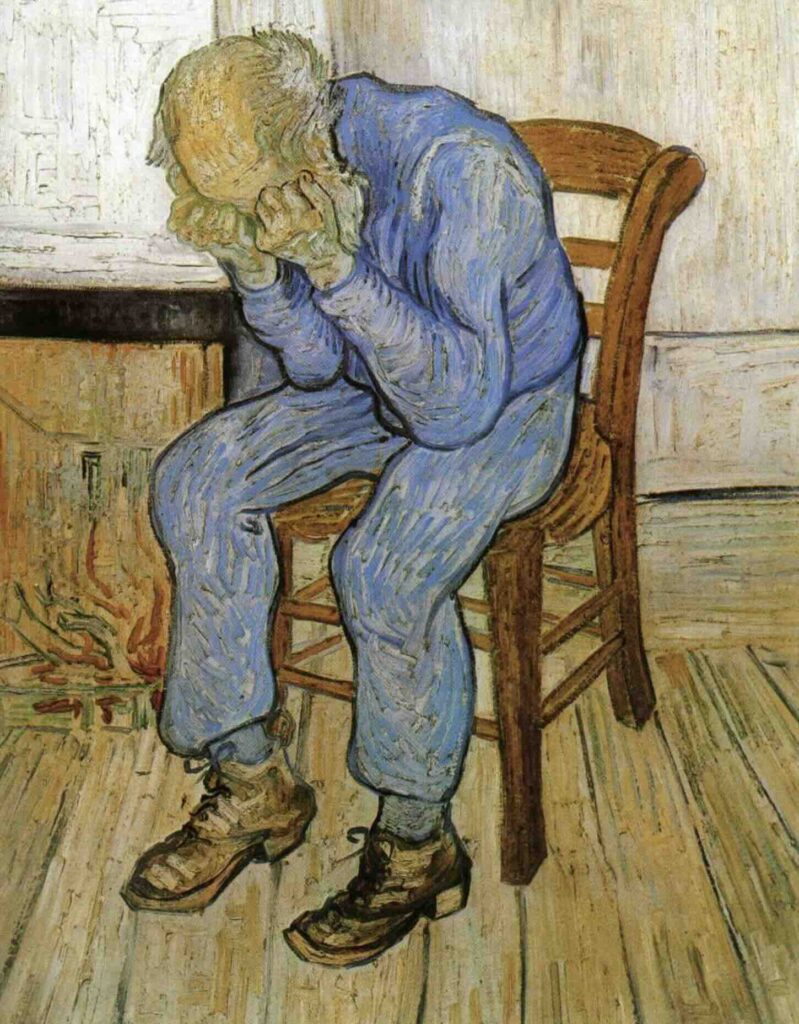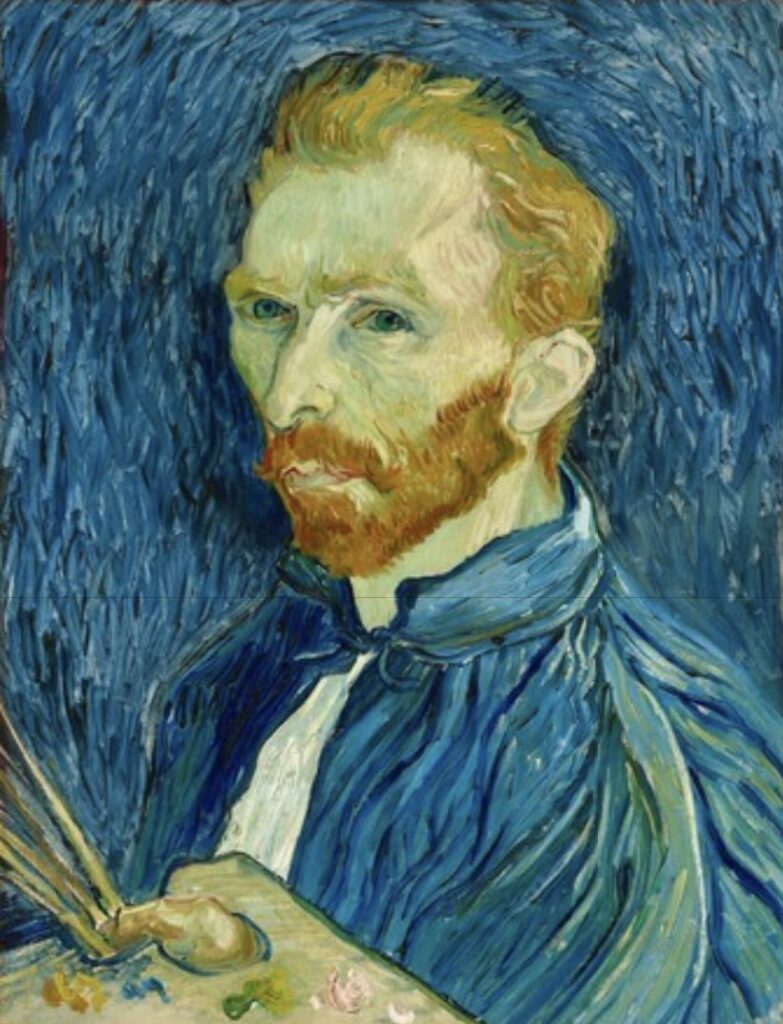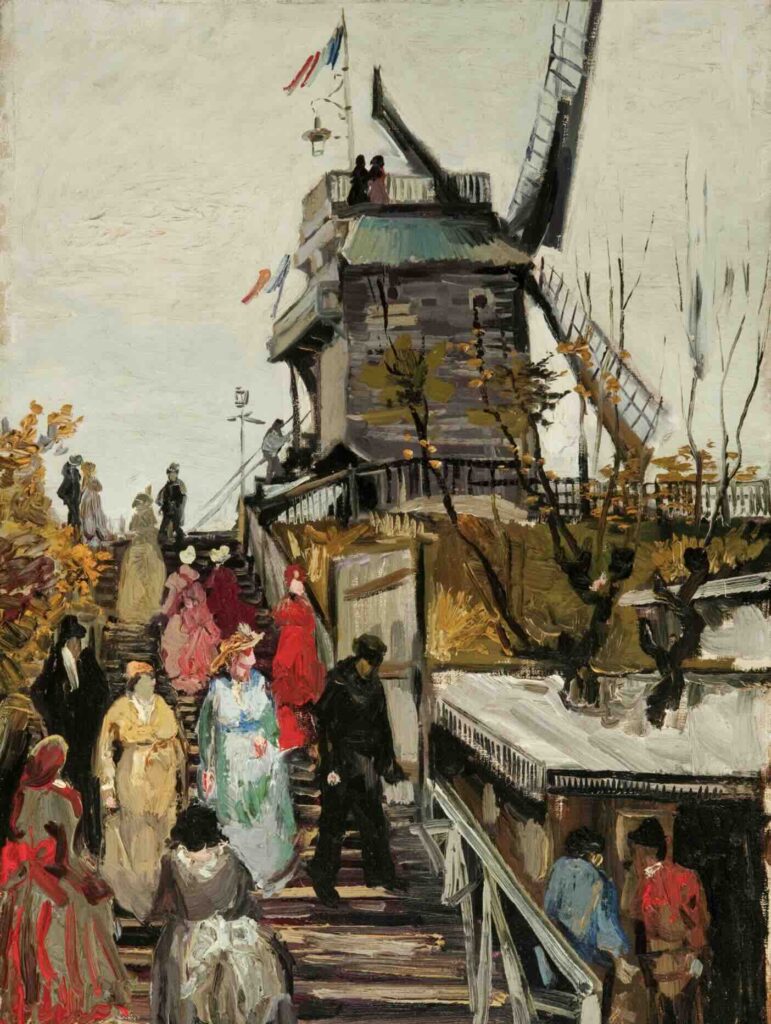Vincent van Gogh is undoubtedly one of my favorite artists. I sincerely appreciate his artwork and his skillful delving into diverse subjects.
However, a standard query is whether Vincent was an Impressionist. In reality, he did not fall into the category of Impressionism, although he certainly drew inspiration from many of the principles embraced by Impressionist artists. Instead, he is rightfully regarded as a Post-Impressionist artist. Join me as we unravel why Vincent van Gogh is a Post-Impressionist artist.
Table of Contents
- Beyond Impressionism: The Post-Impressionism Of Vincent van Gogh
- The Essence Of Impressionism – 5 Key Elements
- 15 Reasons Why Vincent Van Gogh Is A Post-Impressionist
- Emotion Over Impression:
- Bold And Distinctive Colors:
- Brushwork As Expression:
- Bold Outlines:
- Distinctive Style:
- Emphasis On The Inner World:
- Use Of Symbolism:
- Lack Of En Plein Air:
- Subject Matter:
- Intense Self-Portraits:
- Exploration Of Distinctive Techniques:
- Focus On Texture:
- Posthumous Recognition:
- Influence On Modern Art:
- Legacy Of Emotion:
- Frequently Asked Questions
- Related Questions
Beyond Impressionism: The Post-Impressionism Of Vincent van Gogh
Vincent van Gogh, an artist known for his intense and emotionally charged paintings, occupies a unique place in the art world. While he is often associated with the Impressionist movement, a closer examination of his work reveals a departure from the core principles of Impressionism. Instead,
Van Gogh is primarily considered a Post-Impressionist painter. Read on as we will explore why Van Gogh cannot be classified as an Impressionist and provide 15 compelling reasons why he is rightfully categorized as a Post-Impressionist.
The Essence Of Impressionism – 5 Key Elements
Before we delve into Van Gogh’s Post-Impressionism, let’s briefly define Impressionism and its core principles. Impressionism emerged as a revolutionary art movement in the late 19th century, primarily in France.
Impressionist artists sought to capture the fleeting effects of light and atmosphere in their paintings. Critical characteristics of Impressionism include:
Focus On Light:
Impressionists aimed to depict the changing qualities of natural light in their work. They painted en plein air (outdoors) to capture the effects of sunlight.
Color Palette:
Impressionists used a vibrant and often pastel color palette, emphasizing the use of complementary colors to create the illusion of light.
Brushwork:
Artists employed loose, rapid brushwork to capture the transient qualities of the painted scenes. The visible brushstrokes were a hallmark of the style.
Everyday Scenes:
Impressionists often depicted everyday life, including landscapes, cityscapes, and scenes from contemporary society.
Absence Of Detail:
Traditional details and meticulous rendering were eschewed to capture the essence of a scene at the moment.
Now, let’s delve into why Vincent van Gogh’s work is better categorized as Post-Impressionism.
15 Reasons Why Vincent Van Gogh Is A Post-Impressionist
Vincent van Gogh unequivocally belongs to the realm of Post-Impressionist artistry. In this exploration, we’ll delve into 15 compelling reasons why he is undeniably a Post-Impressionist rather than an Impressionist.
Emotion Over Impression:

While Impressionists focused on capturing the fleeting impression of a scene, Van Gogh’s works are driven by intense emotion. His paintings reflect his inner turmoil, making them distinctly different from the objective observations of Impressionists.
Bold And Distinctive Colors:
Van Gogh’s use of bold, vibrant colors goes beyond the gentle pastels favored by Impressionists. He often used color to convey his emotions and create a sense of intensity.

Brushwork As Expression:
Impressionists used loose brushwork to suggest the transience of light, while Van Gogh’s brushwork served as a means of emotional expression. His brushstrokes are dynamic, adding depth and texture to his paintings.

Bold Outlines:
In contrast to the soft edges and lack of distinct outlines in Impressionist works, Van Gogh often used bold outlines to emphasize his subjects.
Distinctive Style:
Van Gogh’s distinctive style is instantly recognizable, marked by swirling forms and energetic compositions. Impressionists typically did not possess such a unique, recognizable style.

Emphasis On The Inner World:
While Impressionists observed and depicted the external world, Van Gogh’s paintings often delve into the depths of his psyche. His works are intensely personal and reflective of his emotional struggles.
Use Of Symbolism:
Van Gogh frequently incorporated symbolic elements into his paintings, imbuing them with deeper meaning. This is a departure from the objective representation favored by Impressionists.
Lack Of En Plein Air:
While Impressionists often painted outdoors to capture natural light, Van Gogh’s works were frequently created indoors or from memory, prioritizing his emotional response over naturalistic accuracy.
Subject Matter:
Impressionists often painted everyday scenes and landscapes, whereas Van Gogh’s subjects were diverse and included portraits, still life, and scenes from his own life.
Intense Self-Portraits:
Van Gogh’s self-portraits are profoundly introspective and reveal his mental state, starkly contrasting the more objective portrayals often found in Impressionist works.

Exploration Of Distinctive Techniques:
Van Gogh experimented with techniques like impasto, layering thick paint to create texture and depth, a technique rarely seen in Impressionist works.
Focus On Texture:
Impressionists aimed for smooth even surfaces, while Van Gogh emphasized texture and physicality in his paintings.

Posthumous Recognition:
“Post-Impressionism” describes artists like Van Gogh, who emerged after the Impressionist movement and extended its ideas in unique ways.
Influence On Modern Art:
Van Gogh’s Post-Impressionist approach profoundly impacted the development of modern art, particularly Expressionism and Fauvism, further distinguishing him from Impressionist painters.

Legacy Of Emotion:
Van Gogh’s legacy is rooted in the emotional impact of his work. His ability to convey profound feelings through art sets him apart from the more objective Impressionists.
Vincent van Gogh’s artistic journey transcends the boundaries of Impressionism, firmly placing him within the realm of Post-Impressionism. While he may have borrowed certain principles from the Impressionist movement, his intense emotions, bold colors, distinctive style, and profound impact on modern art attest to his status as a Post-Impressionist painter.
Van Gogh’s work remains a testament to the power of art to express the depths of human emotion and the boundless possibilities of artistic innovation.
Anita Louise Art is dedicated to art education, great artists, and inspiring others to find and create their art. We love art that uplifts and inspires. #ArtToMakeYouSmile! #ArtToMakeYouHappy!
If you are interested to see any of my art, you can find out more by clicking here. If you are interested in what inspires me and my paintings, you can discover more by clicking here.
We have a free newsletter and would love you to be part of our community; you can subscribe to the newsletter by clicking here. If you have any questions, I would be happy to talk to you anytime. You can reach me, Anita, by clicking here.
Subscribe to our Anita Louise Art YouTube Channel with great videos and information by clicking here.
Join us for our podcast “5 Minutes With Art.” Spend just 5 minutes a week with us to discover and learn about great art and artists. You can find out more about our podcast by clicking here.
Frequently Asked Questions
Was Vincent van Gogh an Impressionist?
No, Vincent van Gogh was not an Impressionist. He is commonly classified as a Post-Impressionist artist.
What is the main difference between Impressionism and Post-Impressionism?
While Impressionism focuses on capturing the fleeting effects of light and color, Post-Impressionism, including van Gogh’s work, delves deeper into personal expression, symbolism, and a departure from strict visual reality.
Did Vincent van Gogh associate with Impressionist artists?
Yes, Van Gogh was aware of and influenced by Impressionist artists, but he did not directly collaborate or exhibit with the Impressionist group.
How did Vincent van Gogh’s style differ from Impressionism?
Van Gogh’s style involved bold colors, thick brushstrokes, and an emphasis on emotional and symbolic content, contrasting with the softer, more atmospheric approach of Impressionism.
Did van Gogh use similar techniques as Impressionist artists?
While van Gogh employed some techniques common among Impressionists, such as visible brushstrokes and plein air painting, his overall artistic approach and themes were distinctively Post-Impressionist.
Why is van Gogh considered a Post-Impressionist?
Van Gogh’s work transcended the immediate visual impressions sought by Impressionists. His art explored deeper emotions, personal experiences, and symbolic meanings, marking a shift from the Impressionist movement.
Did Vincent van Gogh exhibit with the Impressionists?
No, van Gogh did not exhibit with the Impressionists. His work gained recognition after his death, and his influence on art history became more apparent in the Post-Impressionist context.
How did van Gogh’s use of color differ from Impressionists?
While both van Gogh and Impressionists used vibrant colors, van Gogh’s color palette was often more intense and emotionally charged, aiming to evoke specific moods and feelings.
Did van Gogh reject Impressionism entirely?
Van Gogh did not reject Impressionism outright. Instead, he built upon its foundations, incorporating its techniques while pushing artistic boundaries in terms of expression and subject matter.
What impact did van Gogh have on the art world as a Post-Impressionist?
Van Gogh’s Post-Impressionist approach paved the way for modern art movements, influencing artists like Fauvists and Expressionists. His unique style and exploration of personal expression left a lasting impact on the art world.
Related Questions
Which Ear Did Van Gogh Cut Off Left Or Right? And Other Facts
Vincent Van Gogh cut off his left ear; he painted several paintings of himself with the bandaged ear. The events leading up to the ear cutting were because of artistic disagreements with the artist Paul Gauguin. Cutting off his left ear made the local newspaper’s front page and set off a chain of events that would change Vincent Van Gogh’s life forever.
By clicking here, you can discover more by reading Which Ear Did Van Gogh Cut Off Left Or Right? And Other Facts.
Why Did Vincent Van Gogh Commit Suicide?
Vincent Van Gogh had a mental illness; many believe he was manic-depressive. He was also sad and lonely and felt a huge financial burden. He committed himself to the mental hospital for treatment, but all this made it very difficult for him to do what he loved most, which was to paint.
By clicking here, you can learn more by reading Why Did Vincent Van Gogh Commit Suicide?
Why Are Vincent Van Gogh’s Paintings So Valuable?
Vincent van Gogh was an extremely prolific artist who painted over 900 works of art during his short lifetime. His work is appealing, and his use of colors and brushstrokes help make his art genuinely unique. He inspired many art movements and artists, and Van Gogh left us a legacy of his art and his letters and thoughts.
By clicking here, you can discover more by reading Why Are Vincent Van Gogh’s Paintings So Valuable?


